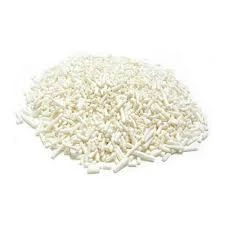
The Role of Sweeteners in Modern Food Products and Their Impact on Health
The Role of Sweeteners in Food A Comprehensive Overview
In recent years, the discussion surrounding sweeteners in food has gained considerable momentum. With the rise of obesity rates, diabetes prevalence, and the general buzz around health consciousness, sweeteners—both natural and artificial—have become a focal point in dietary debates. This article explores different types of sweeteners, their applications in food, and the health implications associated with their consumption.
Types of Sweeteners
Sweeteners can be broadly categorized into two groups natural and artificial or synthetic sweeteners.
1. Natural Sweeteners These include products derived from plants that are minimally processed. Common examples are honey, maple syrup, agave nectar, and fruit extracts such as stevia. Natural sweeteners often contain some nutrients and can be perceived as healthier alternatives to their artificial counterparts. However, they still contribute calories and can affect blood sugar levels.
2. Artificial Sweeteners These are chemically manufactured substances designed to provide sweetness without the added calories. Examples include aspartame, sucralose, and saccharin. Artificial sweeteners are significantly sweeter than sugar, which means only small amounts are needed to achieve the desired sweetness. This property makes them popular in diet or sugar-free products.
Applications in Food
Sweeteners play a vital role in a wide range of food products. They are used not only for flavor enhancement but also for preserving food, improving texture, and providing bulk in low-calorie and reduced-sugar recipes.
- Beverages Many soft drinks, fruit juices, and tea products utilize sweeteners to enhance flavor while keeping sugar content low. This is particularly beneficial for those monitoring their calorie intake.
sweeteners in food

- Bakery Products In baked goods, sweeteners contribute to the Maillard reaction, which enhances browning and flavor. Artificial sweeteners allow manufacturers to create low-calorie options that appeal to health-conscious consumers.
- Dairy Products Yogurts, ice creams, and other dairy items often contain sweeteners to improve taste without adding significant calories.
Health Implications
While sweeteners can be beneficial in moderation, their health implications are a subject of ongoing research and debate.
- Weight Management Many people turn to artificial sweeteners as a strategy for weight loss. However, research shows mixed results. Some studies suggest that consuming these substitutes may lead to weight gain by triggering cravings for high-calorie foods. Others indicate they can support weight loss by reducing overall caloric intake.
- Diabetes and Blood Sugar Control Sweeteners like stevia and erythritol can be beneficial for those with diabetes, as they do not significantly impact blood glucose levels. However, the long-term effects of artificial sweeteners are still unclear, leading to caution among healthcare professionals.
- Gut Health Emerging studies suggest that some artificial sweeteners might disrupt gut microbiota, potentially leading to metabolic issues. Natural sweeteners, on the other hand, often contain prebiotic properties that may promote a healthy gut.
Conclusion
The landscape of sweeteners in food is diverse and complex. While they provide a means to satisfy our sweet cravings without the accompanying calories of sugar, their health implications demand careful consideration. Individuals must weigh the pros and cons of each type of sweetener according to their health goals, dietary preferences, and any pre-existing conditions. As with most components of a healthy diet, moderation is key. The ongoing research will continue to shed light on these substances, helping consumers make informed choices about their sweetener use in the ever-evolving food landscape. Ultimately, being mindful of sweetener consumption can lead to healthier eating habits, benefitting both individual health and overall well-being.
-
Pure Sodium Dichloroisocyanurate Dihydrate | Powerful DisinfectantNewsAug.29,2025
-
Industrial Chemicals: Quality & Purity for Every IndustryNewsAug.28,2025
-
Nitrile Rubber Honoring Strict Production StandardsNewsAug.22,2025
-
Aspartame Ingredients Honoring Food Safety ValuesNewsAug.22,2025
-
Fertilizer for Balanced Plant NutritionNewsAug.22,2025
-
Cyanide Gold Processing with High Purity AdditivesNewsAug.22,2025
-
Formic Acid in Textile Dyeing ApplicationsNewsAug.22,2025
Hebei Tenger Chemical Technology Co., Ltd. focuses on the chemical industry and is committed to the export service of chemical raw materials.
-

view more DiethanolisopropanolamineIn the ever-growing field of chemical solutions, diethanolisopropanolamine (DEIPA) stands out as a versatile and important compound. Due to its unique chemical structure and properties, DEIPA is of interest to various industries including construction, personal care, and agriculture. -

view more TriisopropanolamineTriisopropanolamine (TIPA) alkanol amine substance, is a kind of alcohol amine compound with amino and alcohol hydroxyl, and because of its molecules contains both amino and hydroxyl. -

view more Tetramethyl Thiuram DisulfideTetramethyl thiuram disulfide, also known as TMTD, is a white to light-yellow powder with a distinct sulfur-like odor. It is soluble in organic solvents such as benzene, acetone, and ethyl acetate, making it highly versatile for use in different formulations. TMTD is known for its excellent vulcanization acceleration properties, which makes it a key ingredient in the production of rubber products. Additionally, it acts as an effective fungicide and bactericide, making it valuable in agricultural applications. Its high purity and stability ensure consistent performance, making it a preferred choice for manufacturers across various industries.





